Griffith University’s Sustainable Development Goal (SDG) initiative is transforming newborn care in rural Nepal by empowering frontline health workers to save lives from the very first breath. Addressing SDG 3 (Good Health and Well-being) the project confronts a pressing challenge: the loss of critical newborn resuscitation skills in remote settings, where access to refresher training is rare and clinical exposure is limited. To bridge this gap, the initiative adapted a mobile, simulation-based training tool developed in Uganda, working with the original development team, who are now part of the project team. The tool enables birth attendants to independently refresh their life-saving skills through culturally tailored, on-demand microlearning. Developed in close collaboration with local stakeholders, it is fully adapted to the Nepali language, clinical context, and cultural norms. The project is anchored by strong Nepali partnerships, including local NGOs, clinicians, and academic collaborators. Endorsed and actively supported by the Ministry of Health in Lumbini Province, it aligns closely with national health priorities and systems. Griffith University has demonstrated a deep and sustained institutional commitment to the initiative, providing leadership, academic oversight, and long-term support. This reflects the university’s broader dedication to advancing SDG 3 through high-impact global health partnerships that translate research into real-world change. Piloted successfully in underserved regions of Nepal, the approach has led to statistically significant improvements in knowledge retention and clinical performance. It stands as a powerful example of how universities can work alongside communities to drive equitable, lasting improvements in maternal and newborn health.

CATEGORY WINNER
SDG Impact Award Award
Advancing SDG 3 in Rural Nepal: A Locally Led Digital Solution to Save Newborn Lives
CATEGORY WINNER SDG Impact Award Award
Griffith University - Australia
"Good health begins with the first breath"

Have a say and vote for this entry to win the People's Choice Award!
500 points per vote
Provide your email address and click on "vote". You will then receive an email that enables you to verify your vote by clicking on a link.
1500 points for each share/re-post; 500 points for each like
This entry has not provided any social media links for community voting.
Summary
Key People
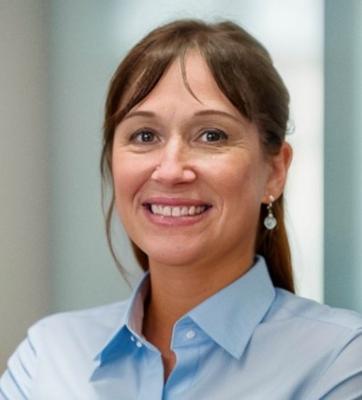
Associate Professor Victoria Kain
Principle investigator (Australia)
School of Nursing and Midwifery,
Griffith University
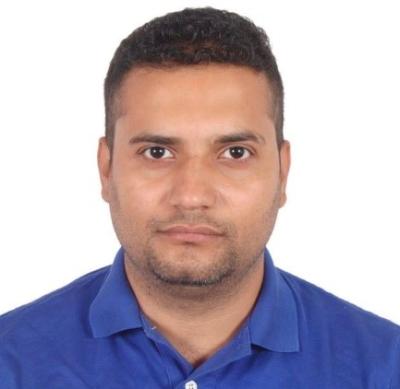
Dr Animesh Dhungana
Co-investigator (Nepal)
National Health Foundation,
College of Medical Sciences, Kathmandu, Nepal
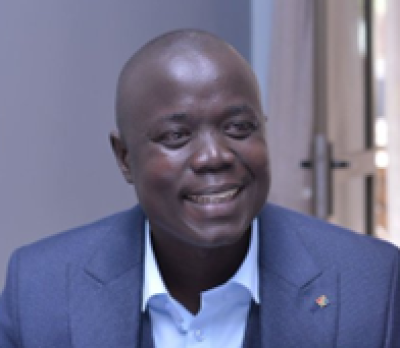
Dr Data Santorino
Co-investigator (Uganda)
Consortium for Affordable Medical Technologies (CAMTech),
Mbarara University of Science and Technology, Uganda
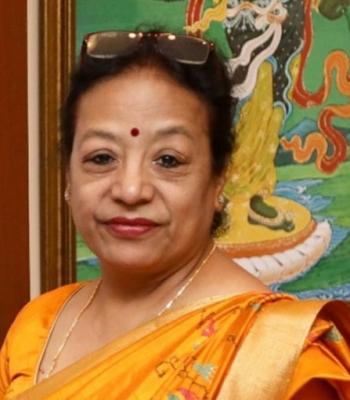
Professor Kiran Bajracharya
Co-investigator (Nepal)
Visiting faculty at Pokhara Nursing campus. Advisor at Midwifery Society of Nepal
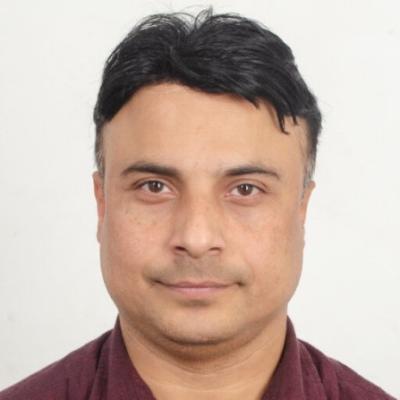
Ranjan Dhungana
Co-investigator (Nepal)
Safa Sunaulo Nepal

Professor Jeanine Young
Co-investigator (Australia)
School of Nursing and Midwifery,
University of the Sunshine Coast, Australia
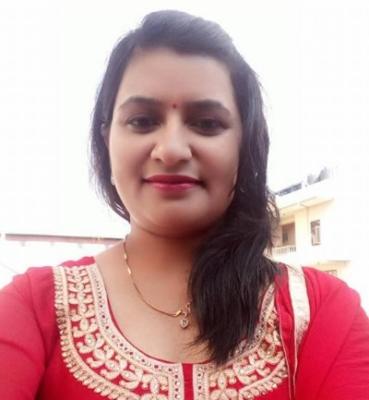
Assistant Professor Bidhya Basnet
Co-investigator (Nepal)
Maharajgunj Nursing Campus,
Tribhuvan University, Institute of Medicine, Kathmandu
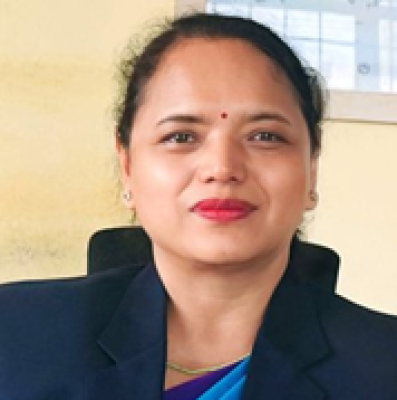
Durga Laxmi Shrestha
Co-investigator (Nepal)
Secretary for the Ministry of Health,
Lumbini Province, Nepal
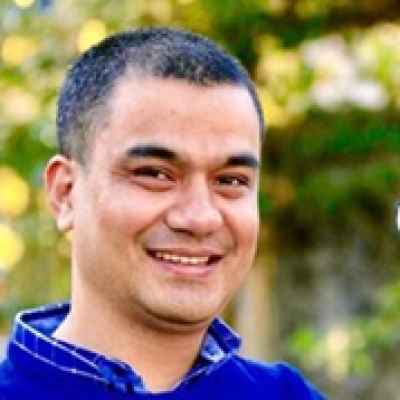
Dr Shyam S Budhathoki
Co-investigator (UK)
Imperial College, London, UK

Dr LB Basnet
Co-investigator (USA)
University of Iowa, USA
Acknowledgements
We gratefully acknowledge the extraordinary openness and commitment of our partners in Nepal, particularly the healthcare workers, hospital staff, and local health authorities, who embraced the project with trust, energy, and a shared belief in its value. Their willingness to engage deeply with a new model of training, to give honest feedback, and to integrate it into their daily practice made this initiative not only possible, but meaningful.
We also thank the leadership and clinical teams at Bheri Hospital, Nepalgunj, and our local NGO collaborators, whose on-the-ground expertise and logistical support were essential to the project’s success. Their partnership has been defined by generosity, professionalism, and shared purpose.
We are especially grateful to Griffith University and School leadership, whose belief in this initiative from its earliest, most uncertain stages provided the foundation for everything that followed. Their support - moral, academic, and institutional - has affirmed the university’s commitment to SDG 3, and to research that is grounded in equity, community, and real-world change.
Finally, we thank our global collaborators for contributing their time, insight, and technical expertise in a way that always respected local context and priorities. This initiative stands as a true example of what’s possible when global engagement is matched by local leadership.
Images
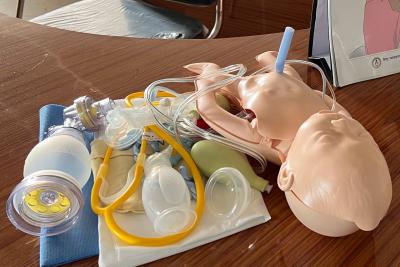
Essential tools used in Helping Babies Breathe training—low-cost equipment that enables frontline health workers to learn life-saving newborn resuscitation skills.
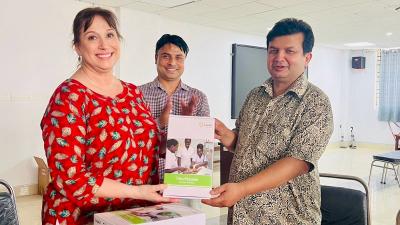
Training equipment donated following our project to ensure healthcare workers in Nepal can continue practicing their life-saving newborn resuscitation skills.
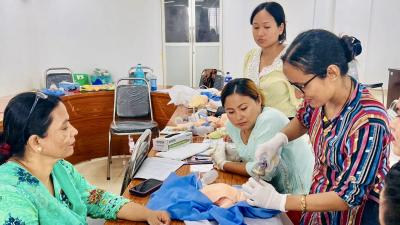
Healthcare workers participate in Helping Babies Breathe (HBB) training, practicing newborn resuscitation skills in a hands-on, supportive learning environment.

Inside a birthing room in rural Nepal —where our project has the most impact. It’s here that trained healthcare workers put life-saving newborn resuscitation skills into action when every second counts.
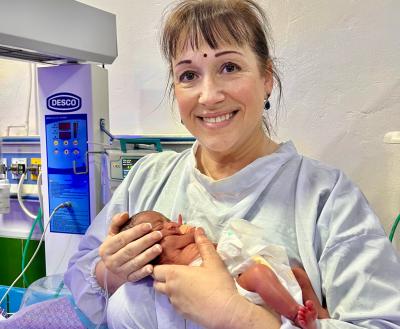
One of the smallest lives at the heart of our mission. Holding a premature newborn in the NICU at Bheri Hospital—reminding us why every breath, and every trained health worker, matters.
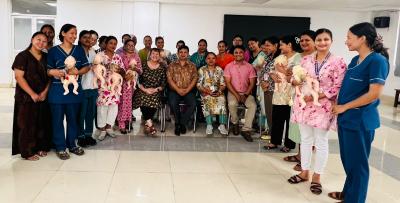
Proud graduates of the Helping Babies Breathe training at Bheri Hospital, Nepal—equipped with the knowledge and confidence to save newborn lives when every second counts.
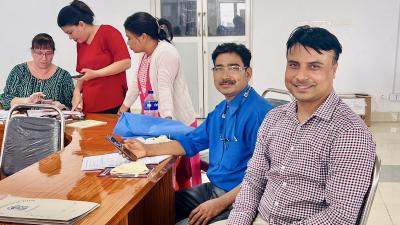
Participants prepare to begin the study as the digital training app is loaded onto their phones—bringing life-saving neonatal resuscitation skills into their hands, anytime, anywhere.
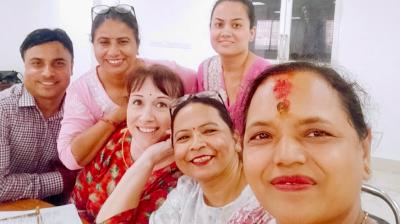
The Helping Babies Breathe (HBB) teaching team—local champions and international collaborators united by a shared goal: to give every newborn a chance to take their first breath.

After two days of hands-on HBB training, knowledge and skills are strong—but without regular refreshers, they can fade. That’s where our digital app steps in, supporting retention long after the workshop ends.

Recognition of dedication—participants proudly receive certification after completing Essential Newborn Care training, equipping them with critical, life-saving skills.
IMPACT STORY
Impacting lifes
In the early hours of the morning in Banke District, Nepal, a young mother gave birth to her first child in a rural hospital. The baby did not cry. For a few seconds, the room stood still, precious moments slipping away. In many such settings, it’s not a lack of care, but a lack of up-to-date training that delays action when every second counts.
But this time was different.
Sita, an Auxiliary Nurse Midwife, stepped forward. Before our study, she had never received formal training in neonatal resuscitation. Like many in her community, she once believed that shaking a baby or holding it upside down would help it breathe - practices that are not only outdated but can be fatal.
Just weeks earlier, Sita had completed our training, using a donated manikin and an app we adapted for this context: translated, localized, and designed for ongoing skill refreshers. That morning, she calmly dried and stimulated the newborn, then began effective ventilation within the ‘Golden Minute.’ A faint cry followed.
The baby lived.
Later, Sita said, “Before, I would have panicked. But the training gave me confidence, and the app helped me remember exactly what to do. I didn’t have to wait for help: I was the help.”
Our pilot has proven the model works. Now we must expand it - more content, more features, more languages, and most critically, more frontline health workers like Sita. With the right support, this tool could transform newborn outcomes across Nepal and beyond.
LEARNINGS
Lessons learned
One of the strongest lessons from this journey is that persistence is everything. We continue to face funding knockbacks, working with limited resources, and raising awareness one conversation at a time. The research continues, not because conditions are ideal, but because the need is urgent, and the work must go on. We are building this initiative under pressure, with a deep belief that impact doesn’t wait for perfect circumstances.
Another key learning is that meaningful innovation requires stepping outside your comfort zone: geographically, professionally, and personally. Working in under-resourced settings demands humility, adaptability, and deep respect for local systems and knowledge. It also offers the clearest view of where health equity must begin.
We’ve learned that frontline workers are not hesitant about digital tools: they are hungry for solutions that make sense in their world. When training is designed in partnership with users, in their language, and on their terms, adoption is not the challenge - access is.
To others working in this space: don’t wait to be ready. Be resourceful. Be bold. Be prepared to keep going long after the easy wins are gone. Focus on people first. The rest will follow.
Because this isn’t research for its own sake. It’s for newborns whose first breath depends on whether the right person was trained, equipped, and empowered, when it mattered most.
FUTURE PLANS
What's coming?
We have built momentum, but without continued support, the impact we have achieved risks fading. What began as a germinal idea, a determined response to a preventable cause of newborn death, has grown into a tested, community-rooted solution now recognised on the world stage. From humble beginnings and minimal funding, we have shown that low-cost, high-impact digital tools can empower health workers in developing countries to save lives when it matters most.
Our pilot has shown the model works. Now we must act, urgently and at scale. The next phase is to expand testing and access to the training in more rural districts in Nepal, and to return to Uganda, where the original app was developed and first piloted. These are regions where neonatal mortality remains high, and where the need for sustainable, accessible training is most urgent.
We aim to build on what we have learned by developing additional content, adapting it to more languages, and improving usability and long-term engagement. A key focus is to integrate gamification features, using game-based elements such as quizzes, scores, and peer challenges to encourage regular practice, reinforce learning, and promote friendly competition. These features help healthcare workers maintain confidence and skills over time.
But this next stage requires further testing and validation. Without sustained support, we cannot move from a promising concept to sustainable impact.
Beyond Nepal and Uganda, our vision is a regional model of newborn care innovation, rooted in local partnerships but adaptable across other low- and middle-income countries.

